Kirby
 It may be a well-known cameo, but Kirby's transformation ability known as "Sword" is a direct reference to The Legend of Zelda's Link, given away clearly by the green cap the pink puffball adopts upon gaining the blade.
It may be a well-known cameo, but Kirby's transformation ability known as "Sword" is a direct reference to The Legend of Zelda's Link, given away clearly by the green cap the pink puffball adopts upon gaining the blade.
Various sword attacks Kirby performs take inspiration straight from the Zelda series, and the Sky Energy Sword is a very obvious clone of the Skyward Strike from Skyward Sword, whereby pointing the sword to the sky charges it up to shoot stronger beams. These beams can also only be used when Kirby is at full health, just like how beam shooting works in Zelda games.
Scribblenauts Unlimited
Maxwell is joined by a few familiar faces in his Wii U adventure. Able to summon almost any object he likes to help him on his quest for Starites, he can gain the help of Nintendo characters and items in the Mario and Legend of Zelda series by typing the correct names into his notebook.Link, Zelda, Sheik, Ganondorf, Ganon, Beedle, Tingle, Navi, Epona, Dark Link and a Goron can all be created, with the heroes naturally battling against the evil-doers for a little amusement. Navi will even follow characters around if desired, to give that true-to-form Ocarina of Time feeling. Items able to be called up include the Hookshot, Hylian Shield, Master Sword, Triforce, a Rupee and Epona's Song-playing ocarina. Of course, Link and other characters can equip such items as the Master Sword and Hylian Shield, and the Hookshot can even latch onto other people, with Maxwell then able to fly through the air whilst dragging the person along for the ride.
Nintendo Land
Nintendo Land's attempts to showcase clever use of the second screen of the Wii U GamePad resulted in a number of mini-games that could be very fun in multiplayer, and with each one being based on popular Nintendo franchises, it was no surprise to see a Legend of Zelda themed attraction in the game's theme park.The Legend of Zelda: Battle Quest sees friends adventuring through an on-rails fabric-made world as Miis dressed up in Link tunics, defeating enemies and bosses until battling the final foe, Ganon himself. Using Wii Remote Plus controllers, each player can swing the device to slash their sword, attacking enemies and defeating them all before moving on to the next area. As in Skyward Sword on Wii, the enemies will often leave openings when they block, so the remotes must be swung in accurate directions to land strikes.
The GamePad user is the archer, and acts as the backup member of the team, taking out fiends from a distance and hitting switches to unlock doors. Since the team all shares the same bunch of hearts, they must work together in order to remain succeed.

Bayonetta
Link's recognisable green outfit has made numerous cameos as a simple extra unlockable or DLC in other games, but Bayonetta and Bayonetta 2 took it a step further when adding the Hero of Hyrule costume to the Umbra Witch's wardrobe.
Rupees appear instead of collectible halos, and various jingles from the Legend of Zelda series play in particular moments, such as when opening chests, unlocking doors, entering portals and assembling the Broken Witch Hearts.
Super Mario Maker
In amongst the various visual styles from across four different Mario games in Super Mario Maker, Nintendo has seen fit to include numerous cameo appearances for a wide range of franchises, not limited to just Nintendo games themselves. Sonic the Hedgehog, Pac-Man, the Wii Balance Board, a Mercedes-Benz GLA, Chitoge Kirisaki from Nisekoi, and even heavy metal J-pop band Babymetal are all actually playable avatars. And that's just a tiny selection of what's on offer.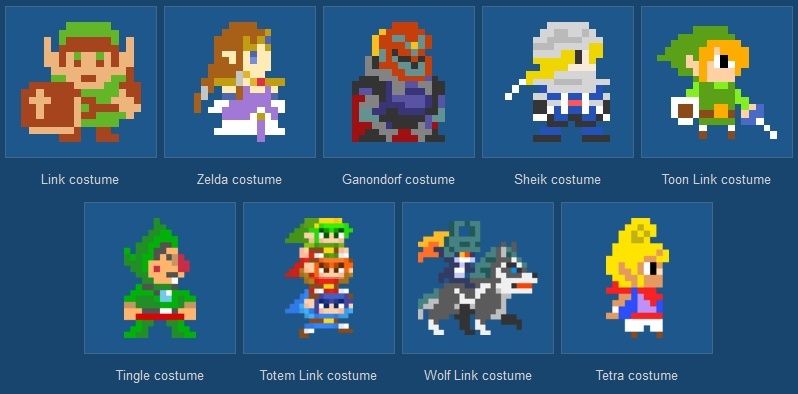
Naturally, The Legend of Zelda has its fair share of outfits for Mario to change into, and include Link, Zelda, Ganondorf, Sheik, Toon Link, Tingle, Totem Link (the three Links from Tri Force Heroes), Wolf Link and Tetra. Every costume has three special audio pieces attributed to it and activates when a costume is obtained, when the goal post is reached and when Mario loses a life. For example, taken from The Wind Waker, Toon Link's costume change tune is the item obtainment jingle, the Boating Course completion tune plays when the goal post is reached, and when a life is lost, the tune when Link is thrown into a cell in the Forsaken Fortress plays. Pressing up on the D-pad lets the character strike a pose, such as Link holding the Triforce above his head.
Nintendo has been pretty consistent in producing a steady stream of free Costume Mario content, so hopefully we can expect more Zelda-themed transformations in the future.
Captain Rainbow
 The bizarre world of Captain Rainbow, a Japan-exclusive Wii title, sees Nick travelling to Mimin Island, a place that supposedly allows wishes to come true. With his failing superhero TV show continuing to decline, Nick meets a number of long-forgotten Nintendo characters that are also on journeys of their own, looking to have their own wishes fulfilled.
The bizarre world of Captain Rainbow, a Japan-exclusive Wii title, sees Nick travelling to Mimin Island, a place that supposedly allows wishes to come true. With his failing superhero TV show continuing to decline, Nick meets a number of long-forgotten Nintendo characters that are also on journeys of their own, looking to have their own wishes fulfilled.
One such character is Crazy Tracy, the lady in Link's Awakening that provides Link special healing potions that can revive him if he falls in battle. Her appearance in Captain Rainbow is far unlike her demeanour in her debut title, though. Not only does she have remarkably different looks in the form of her blonde hair (originally black) and exaggerated chest, but her personality takes a wild turn, as well.
Referred to as just "Tracy" here, the young woman wants to enslave all men in the world, with one scenario in the game seeing Nick help her enslave Takamaru, the hero of The Mysterious Murasame Castle. Nibbling on strawberry Pocky, which she stores in her cleavage, her titillating attitude and looks have garnered her a few fans, with soldiers of Famicom Wars often secretly watching her in her mansion.
Although never released outside of Japan, an English and Italian translation patch was being worked on, which would render Captain Rainbow playable for anyone looking to experience this oddly wonderful title and to see another side to Crazy Tracy that no one was expecting. Unfortunately, progress has stalled, so it might be a while yet before others can fully appreciate her amusing storyline.
Sonic Lost World
This is probably one of the most unexpected cameos on the list. The free Legend of Zelda Zone DLC in Sonic Lost World sees a Link-dressed Sonic the Hedgehog exploring a stage based around the open fields of Hyrule, featuring a number of elements from Nintendo's series incorporated into the gameplay and design.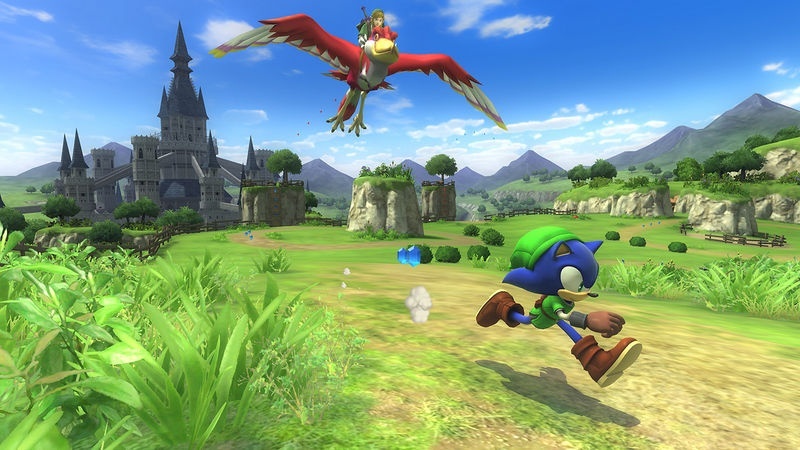
The truth is that this is quite a barebones stage, and is designed primarily just for fan service more than any sort of challenging and clever level design. Whilst offering a more open approach to the usual lot of zones, there is still very little to do. It could have been a way to mutually promote both Sonic Lost World itself and the upcoming (at the time) Hyrule Warriors.
Mario Kart 8
The introduction of DLC for Mario Kart 8 came with a bit of a shock in the form of Link being a playable racer because it marked the first time a non-Mario universe character became usable in the series. It has been widely praised for being a great move by Nintendo, though, as the developer looks for ways to keep the kart racing franchise fresh, and bringing in other Nintendo characters is one way to do just that.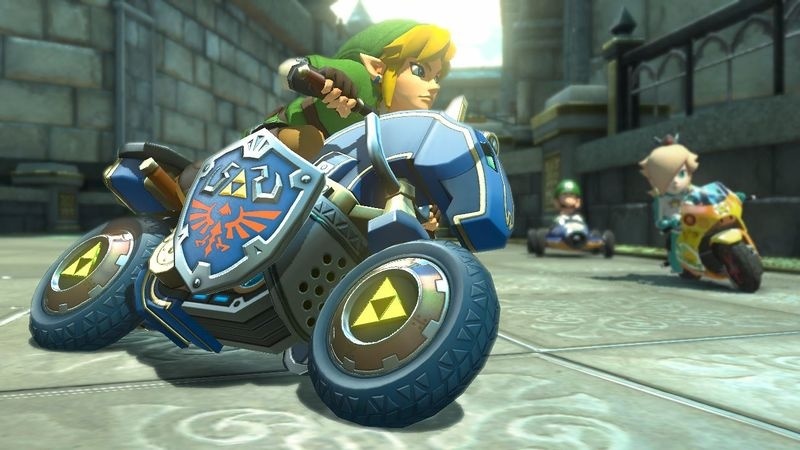
In addition to Link himself and the new bike and parts, the Triforce Cup was also added with this DLC, which included Hyrule Circuit, a brand-new, originally-designed track set in Hyrule Field and through Hyrule Castle. Plenty of ideas are pulled from the source material to contribute to the theme, including Deku Babas, Keese and Rupees replacing the standard Piranha Plants, Swoops and coins, respectively. By bashing into three switches inside the main room of Hyrule Castle, the Master Sword will be summoned, which grants the opportunity for a trick to be performed to gain a boost of speed.
Outside of the DLC pack, scanning the Link or Toon Link amiibo unlocks the Link Racing Suit for Mii characters.
It will be interesting to see whether Nintendo continues to include Link in future Mario Kart games. Perhaps it will pave the way for other characters in the series to be playable, too, such as Princess Zelda, Ganondorf or Malon. With the strong favourable reaction to Link's inclusion from fans, it would be silly not to.
SoulCalibur II
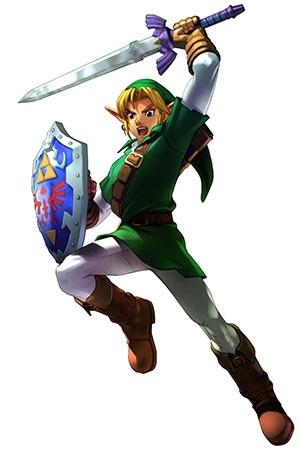 Something of a trend began with SoulCalibur II, whereby guest characters from other games joined the fight to either destroy or claim the evil blade Soul Edge. As part of collaborations that saw Tekken's Heihachi become part of the PlayStation 2 version and comic book character Spawn the Xbox fighter, Nintendo had the easy win with The Legend of Zelda's Link being the poster boy of the GameCube edition.
Something of a trend began with SoulCalibur II, whereby guest characters from other games joined the fight to either destroy or claim the evil blade Soul Edge. As part of collaborations that saw Tekken's Heihachi become part of the PlayStation 2 version and comic book character Spawn the Xbox fighter, Nintendo had the easy win with The Legend of Zelda's Link being the poster boy of the GameCube edition.
It was no surprise to hear that the GameCube version sold the most between the three platforms, with fans flocking to play as the elven hero in one of the most established weapons-based fighting series on the market.
Although based on his Ocarina of Time look, SoulCalibur II's Link was able to use weapons from other games, including those of A Link to the Past. As well as his standard and well-balanced Master Sword and Hylian Shield setup, he could also unlock the Razor Sword, Biggoron Sword, Great Fairy Sword, and even other non-sword weapons, including the Megaton Hammer, Cane of Byrna and the deadly Bug-Catching Net. These all had varying degrees of effects in battle, such as extra defence/offense or regenerating HP.
Many of his moves from throughout the series and his Super Smash Bros. appearances made the transition over to his SCII moveset, with dash attacks, jump attacks, spin attacks and varying slashes that fans will recognise from The Legend of Zelda all at Link's disposal. He is also the only ranged combatant in the roster, with the bow, bomb and boomerang moves able to attack foes from a distance, rendering him an extremely difficult fighter to compete against if used well.
The HD Online version of SoulCalibur II never saw release on the Wii U, so Link sadly never made an appearance in the updated download-only title, with Namco citing lacking sales of Nintendo's console as the reason it never got ported over. Needless to say, should SoulCalibur VI return on Nintendo's next system, fans will be pleading for a return of Link, if only to make up for the loss of the enhanced edition of this game.

Super Smash Bros.
Easily the most widely known cameo for Link is his participation in the all-star fighting tournaments set within the Super Smash Bros. universe. Link has been a stalwart character, appearing in every instalment in the series, beginning with the original on the Nintendo 64, and put together a moveset that uses his iconic Master Sword and various other weapons, including boomerang, bow and arrows, bombs and hookshot.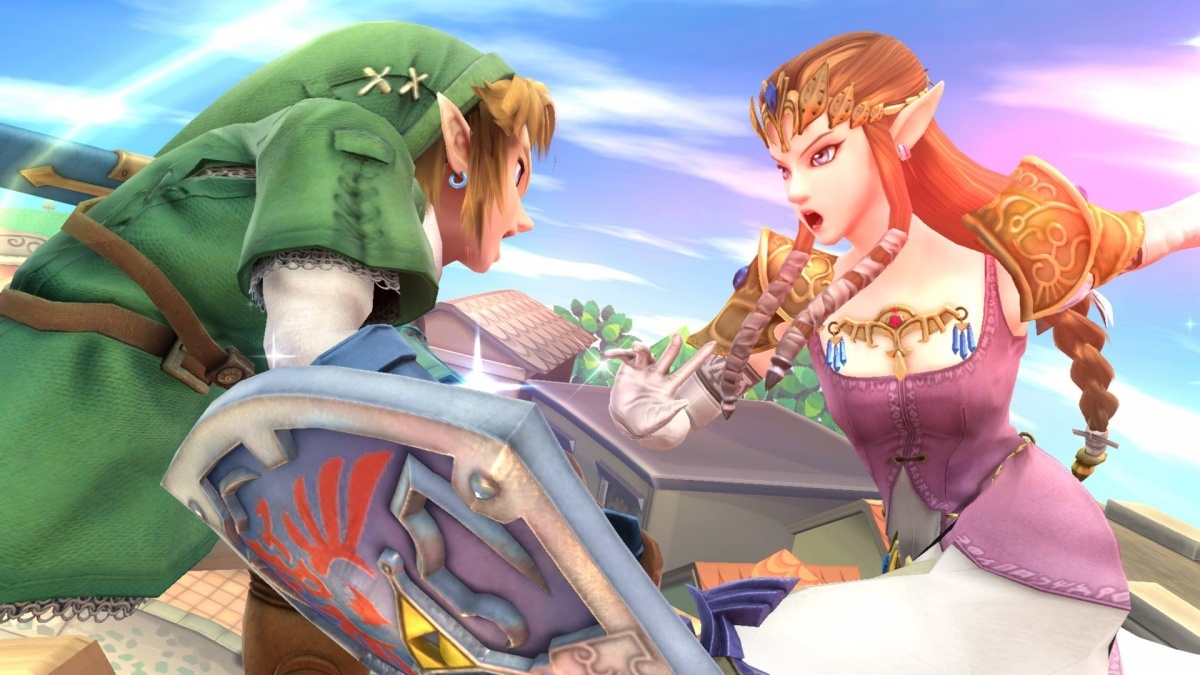
It wasn't until the Wii's Super Smash Bros. Brawl that Toon Link made his unexpected Smash debut, replacing Young Link with his nifty moves and The Wind Waker weapons. The only major change amongst the Zelda cast in the Wii U and 3DS entries was Princess Zelda and Sheik becoming individual fighters of their own right.
Apart from the characters themselves, there are all manner of franchise references thrown into all Smash Bros. games, ranging from stages based on central locations, original and remixed music from up and down the series, items and Assist Trophies that can turn the tide of battle, and unlockable Trophies that depict and detail various characters, items and more from the history of The Legend of Zelda. For such a popular and huge series, though, it's a surprise there haven't been at least a couple more other characters introduced with more recent Smash titles. Perhaps with the success of Hyrule Warriors, a few ideas are doing the rounds for the next game…
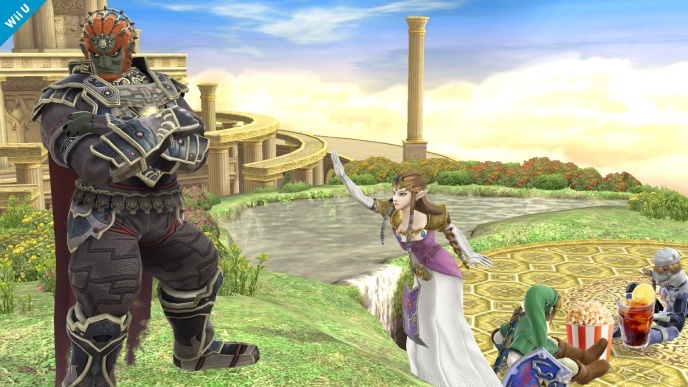

 Sign In
Sign In 28.05.2016
28.05.2016  RufDogRacing
RufDogRacing 
 Link to this post:
Link to this post:  Subscribe to this topic
Subscribe to this topic Features
Features





 Top
Top

